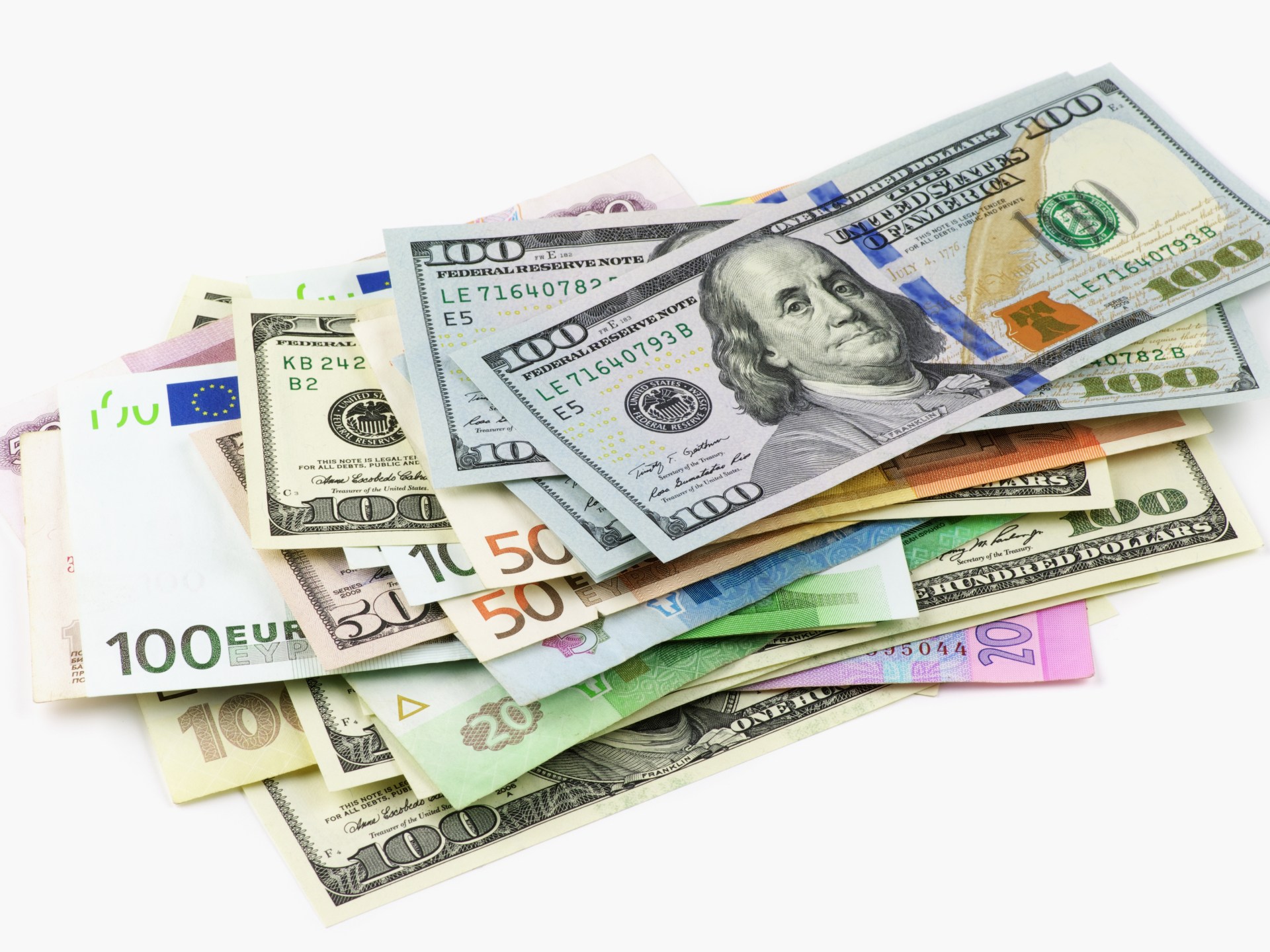The US dollar is considered the standard by which the strength of other currencies is measured (Shutterstock)
A recent report by the Techopedia platform indicated the 15 most powerful currencies in the world for the year 2024, as the report shed light on the dynamics of currency strength and the factors affecting it. The report, which is based on currency exchange rates against the dollar, emphasizes the importance of various economic indicators and geopolitical considerations in determining currency values.
Currency strength
Currency strength, an important aspect of the global economy, refers to the relative purchasing power of a currency compared to other currencies. The US dollar is chosen as a reference standard because of its great dominance as the most prominent currency in the world, so it is outside of comparison. It is worth noting that the US dollar participated in 88% of all foreign exchange transactions between 2019 and 2022, according to a central survey conducted every 3 years by the Bank for International Settlements.
The US dollar is chosen as a reference standard because of its great dominance in global commercial operations (Reuters)
Currency pricing
The foreign exchange pricing mechanism covers a diverse landscape. While most global currencies operate under a floating exchange rate system, where their foreign exchange rates are determined by market forces of supply and demand, some currencies are tied to a reference currency. A fixed exchange rate system ensures stability.
Basics of currency strength
There are many factors that support currency strength, including inflation rates, political stability, and economic outlook. Among these determinants, three main determinants stand out: terms of trade, interest rate differentials, and capital controls.
In an interview with the Techopedia platform, Dr. Sarah Johnson, an economist, said that “terms of trade play a pivotal role in influencing the rise or fall in the value of the currency.” “Similarly, interest rate differentials and capital controls have a significant impact on capital flow and thus affect the foreign exchange rate,” she added.
While John Smith, a veteran economic analyst for the platform, said: “The imposition of strict capital controls by central banks, especially in Middle Eastern countries such as Kuwait, has contributed significantly to the rise of their currencies on the global stage.”
The Kuwaiti dinar ranked first as the highest value among currencies against the dollar (Shutterstock)
The strongest currencies in the world
As of March 2024, the 3 strongest currencies in the world were the Kuwaiti dinar, the Bahraini dinar, and the Omani riyal. These currencies underscore the profound influence of geopolitical factors on currency valuations.
Kuwaiti Dinar (KWD)
Topping the list is the Kuwaiti dinar, which has been considered the most valuable currency against the dollar. Linked to an undeclared basket of several global currencies, one Kuwaiti dinar is equal to $3.25.
Bahraini Dinar (BHD)
Next comes the Bahraini dinar, which is linked to the dollar, with the value of one dinar being $2.65.
Omani Rial (OMR)
The Omani riyal occupies third place on the list, and one Omani riyal is equivalent to 2.6 dollars.
The Omani riyal ranked third on the list (Getty)
British Pound (GBP)
The pound sterling stands out as the fourth strongest currency in the world, with an exchange rate of $1.26 per pound sterling.
Swiss Franc (CHF)
The Swiss franc is known for its safe-haven currency status, and holds its place as the fifth most valuable currency. With an exchange rate of one Swiss franc equivalent to $1.10.
Euro (EUR)
The euro holds a strong position as the sixth strongest currency in the world, with an exchange rate of $1.08.
Brunei Dollar (BND)
The Brunei dollar ranks seventh, which reflects the stability and economic prosperity enjoyed by Brunei. So, the value of one Brunei dollar is 0.74 US dollars.
Singapore Dollar (SGD)
Singapore's economic vitality is reflected in the strength of its currency, the Singapore dollar, which ranks eighth on the list, with the price of one Singapore dollar remaining at $0.74.
Canadian Dollar (CAD)
Canada's status as a crude oil exporting country contributes to the strength of its currency, the Canadian dollar, as it ranked ninth with a value of $0.735.
Australian Dollar (AUD)
Australia's position as a major exporter of basic commodities is confirmed by the strength of its currency, the Australian dollar, which ranks tenth on the list, with a value of $0.65.
New Zealand Dollar (NZD)
The New Zealand dollar ranks 11th with a value of $0.599.
Bulgarian Lev (BGN)
The Bulgarian lev is ranked 12th, demonstrating Bulgaria's transition to a market-based economy, and the value of the lev is $0.553.
Qatari Riyal (QAR)
Qatar's rapid economic growth is reflected in the strength of its currency, the Qatari riyal, which ranks 13th in the world, with a value of $0.275.
Qatar's rapid economic growth is reflected in the strength of its currency, the Qatari riyal, which ranks 13th (Shutterstock)
Israeli Shekel (ILS)
The Israeli shekel ranked 14th with a price equivalent to $0.273.
UAE Dirham (AED)
The UAE dirham comes in 15th place on the list, showcasing the diverse economy of the United Arab Emirates. With a value of $0.272.
While these currencies are showing strength against the dollar, it is essential to realize that a currency's valuation is only one aspect of a country's economic status and global influence.
Although the rankings provide insight into the strength of different currencies against the dollar, it is necessary to consider the broader economic and geopolitical factors that shape currency values. Despite the fluctuations, the dollar maintains its position as a global currency, which is reflected in its importance in international finance and trade.
Source: American press

